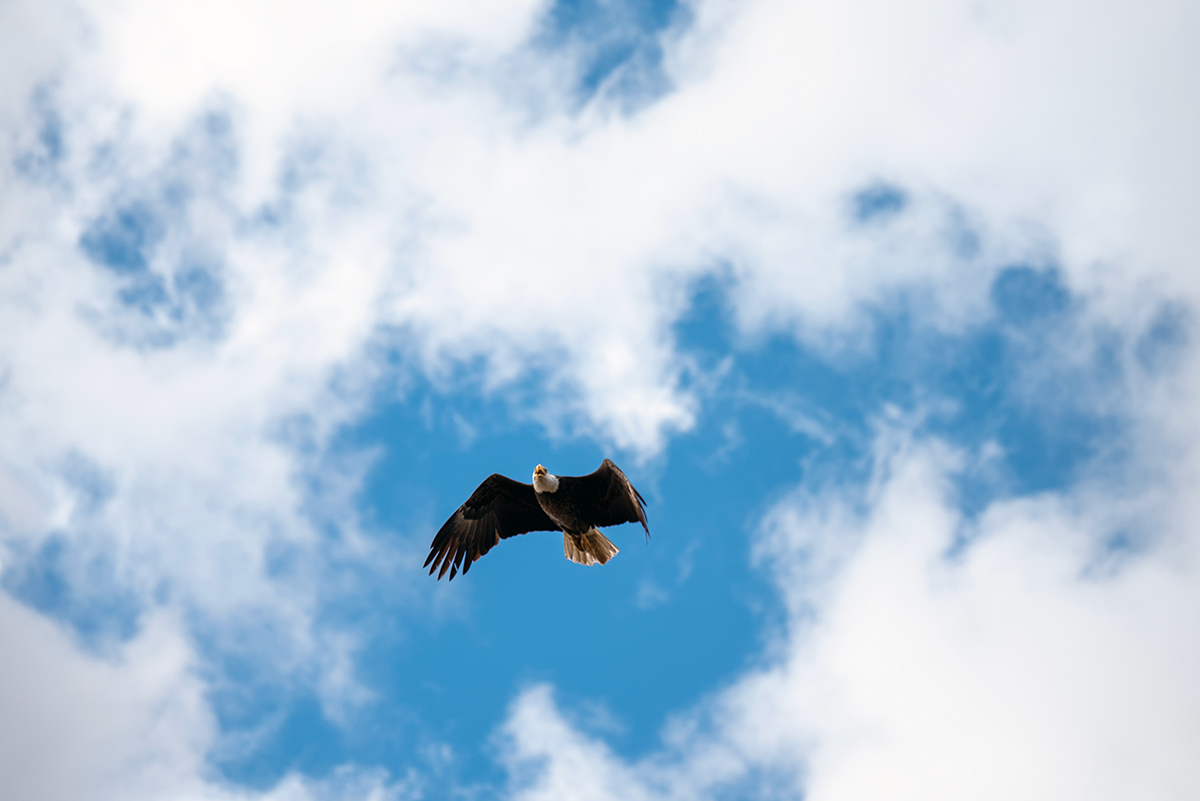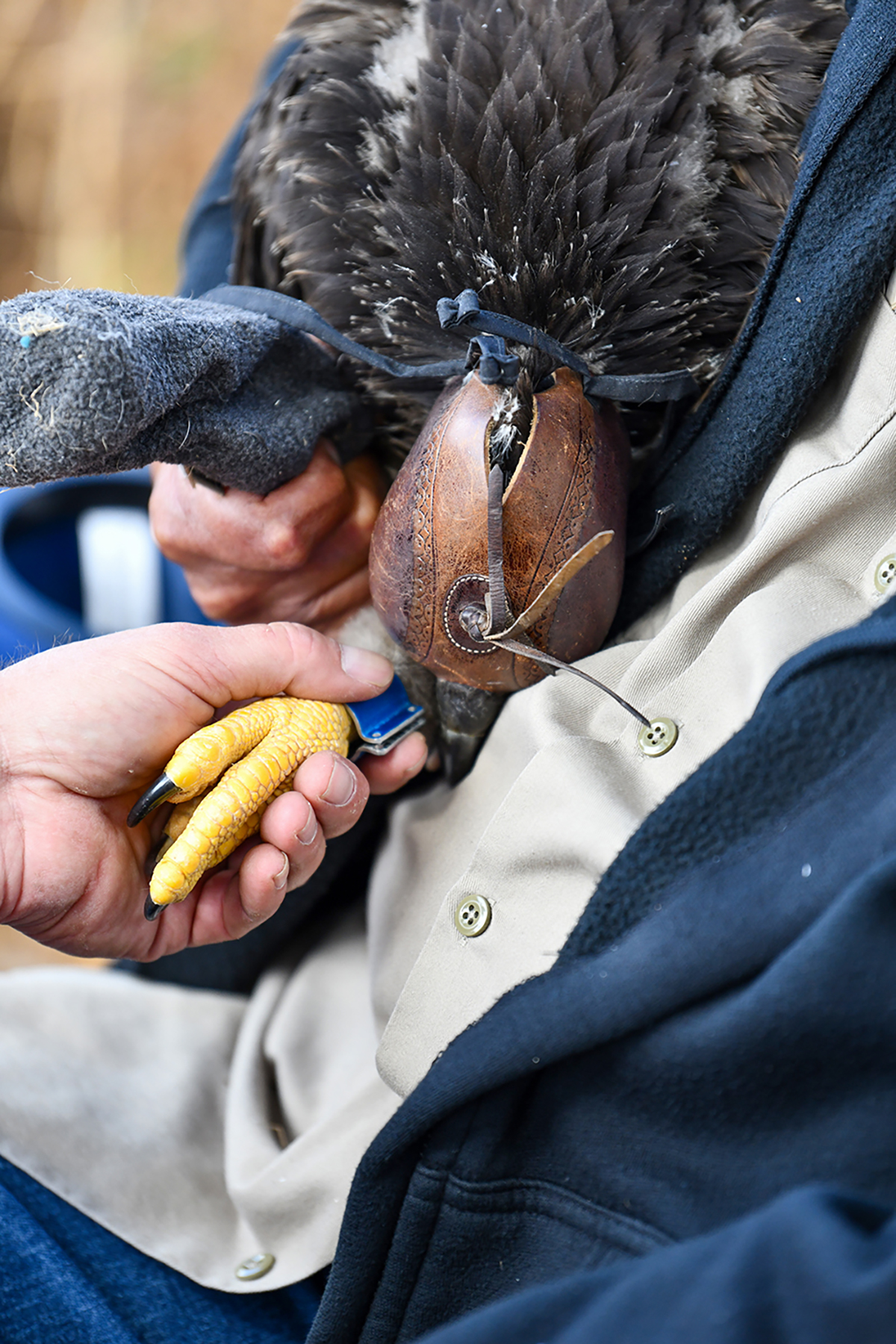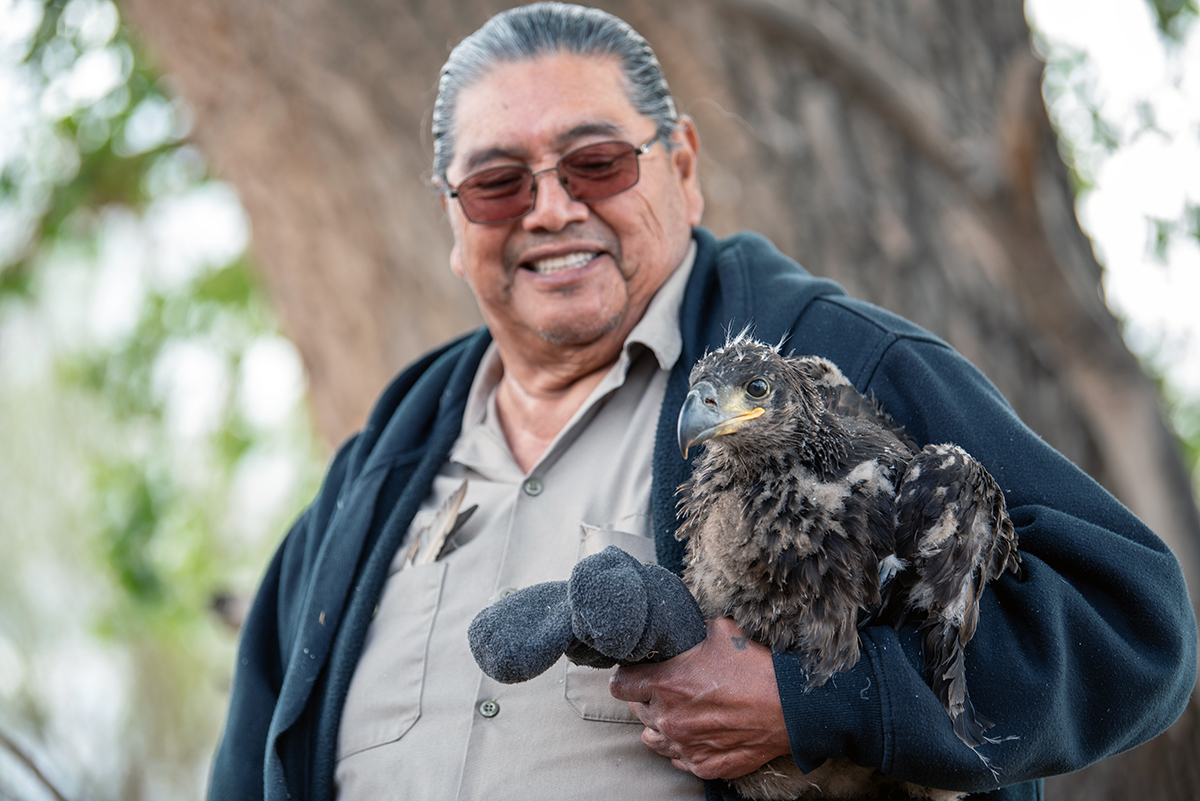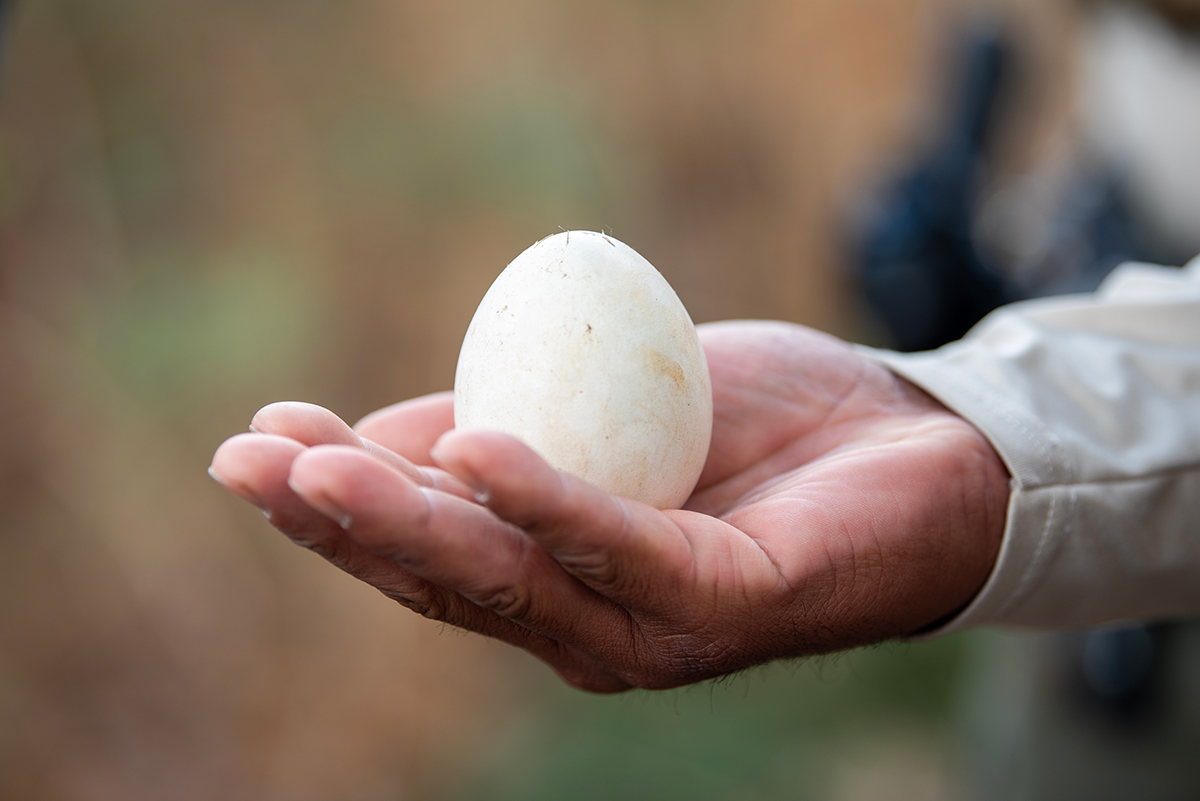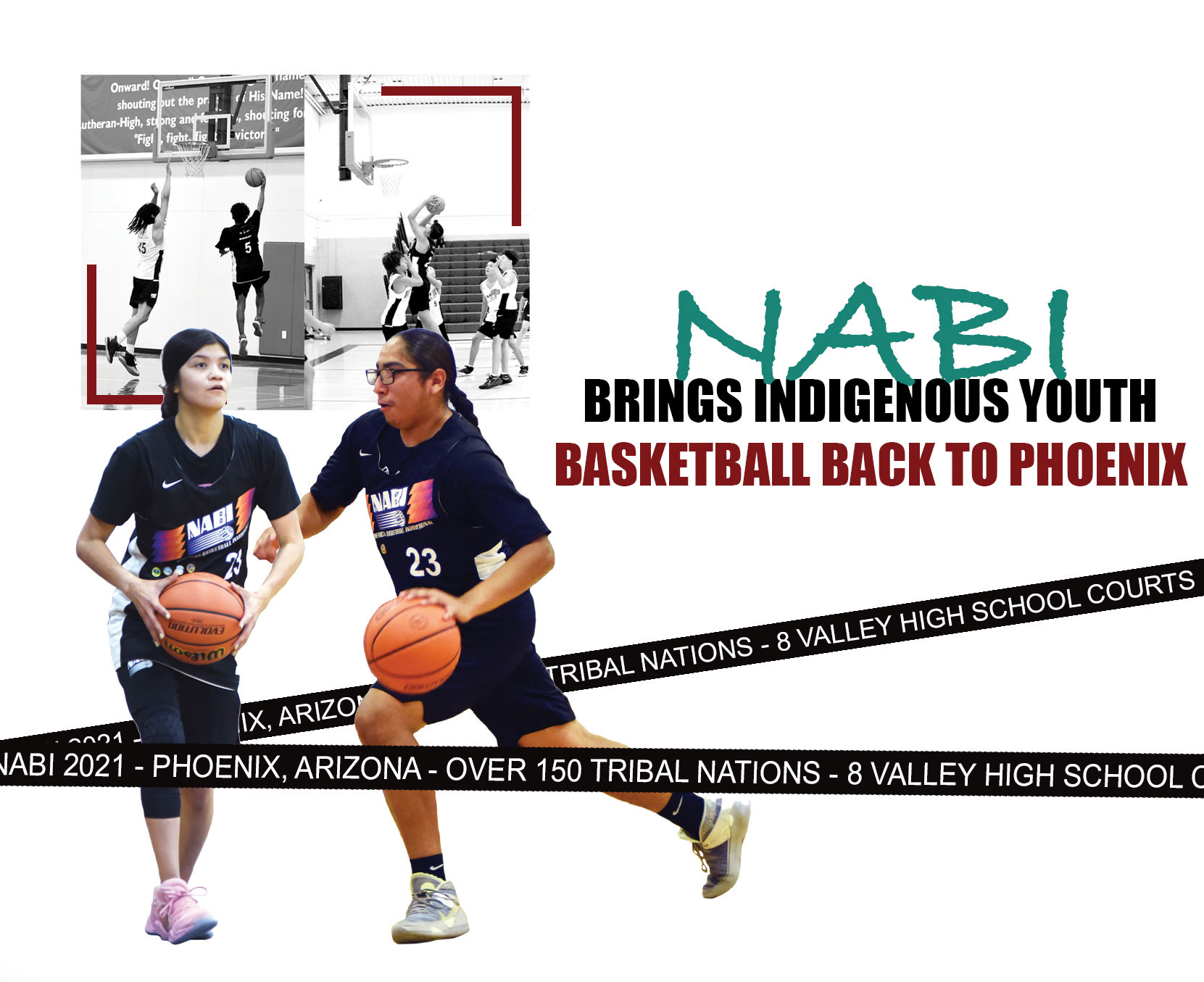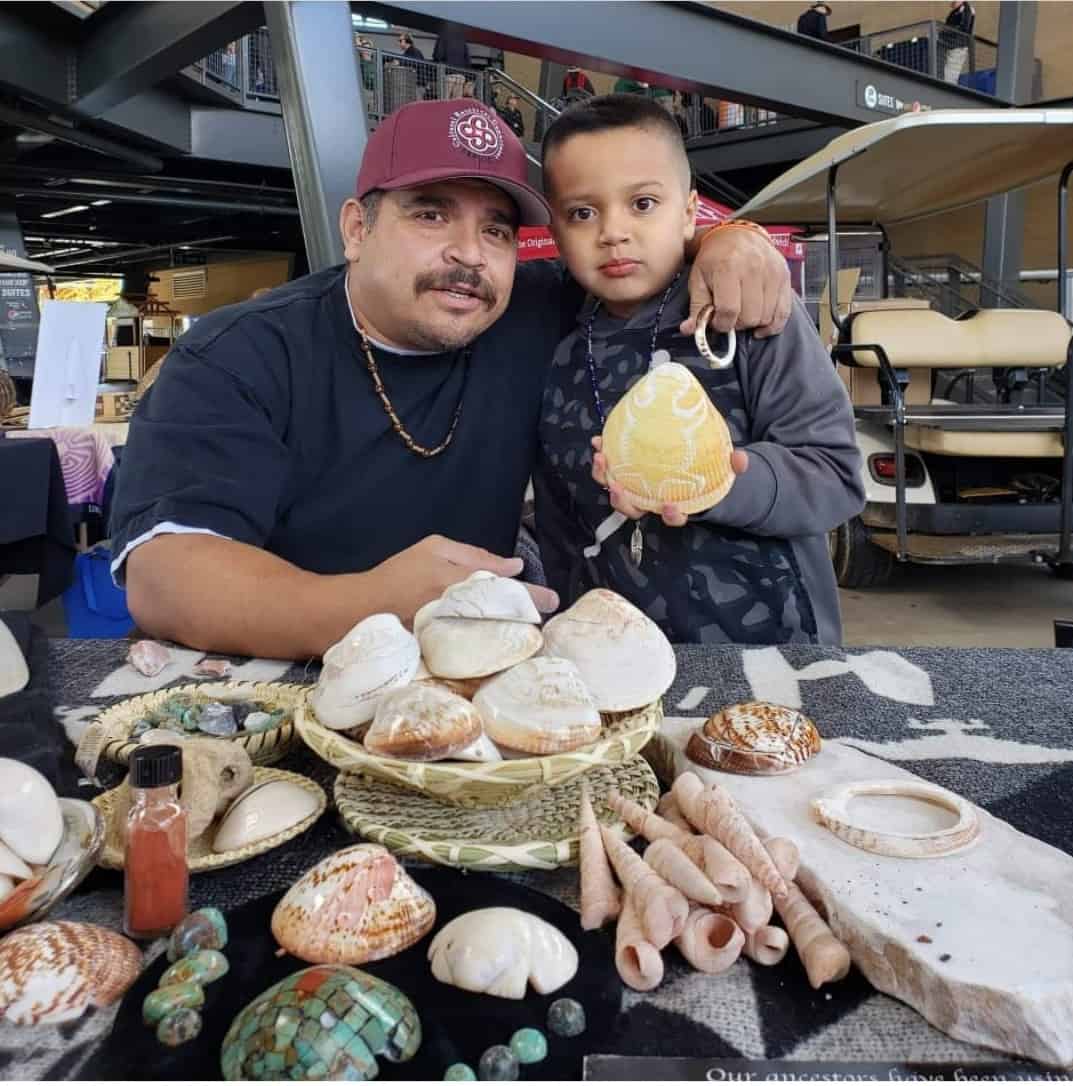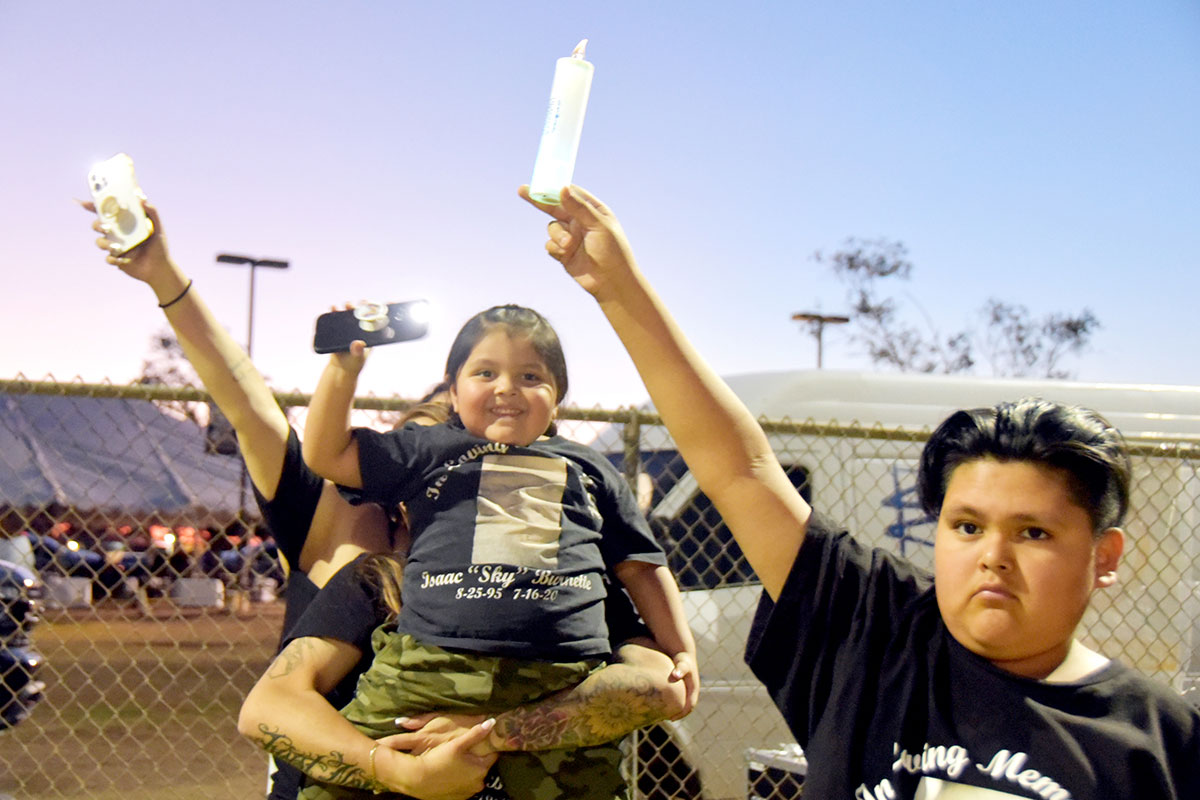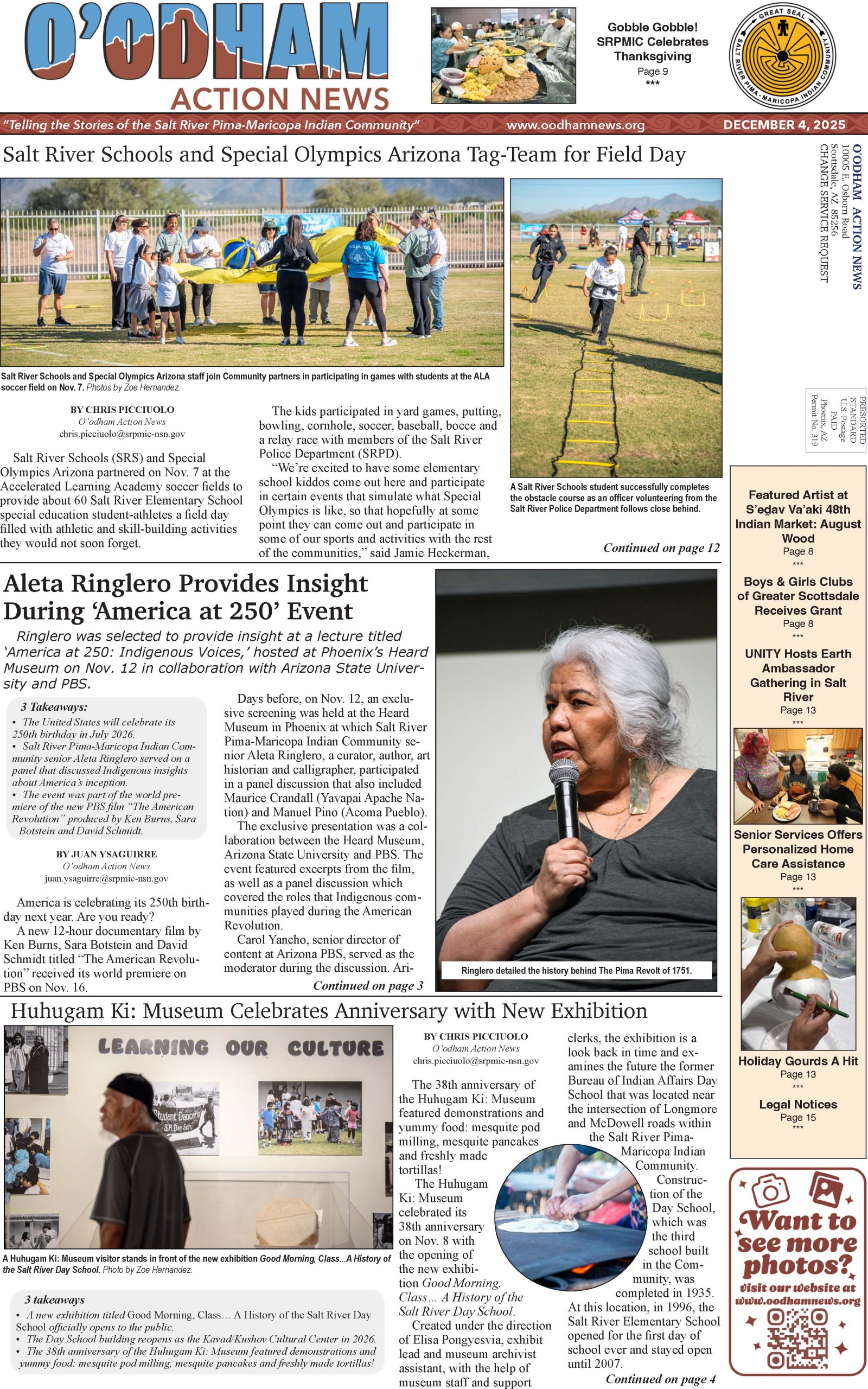VIEWS: 1089
April 17, 2025SRPMIC Seniors, Membership and Staff Conduct Eagle Bandings
A team comprised of SRPMIC Seniors, management, staff, wildlife biologists, environmental specialists and others collaborated on March 12 in the Salt River Pima-Maricopa Indian Community to conduct an eagle banding.
In the United States, bird banding was established in 1920. During that time, most species like ducks and geese were given a federal band. These bands collect data in four key categories: tracking movement, population monitoring, identifying threats in the surrounding area in addition to monitoring behavior.
The eagle banding process has been an ongoing process in the SRPMIC since 1987 when it was established to monitor population changes and effects of management efforts.
An important note to include when discussing any bird banding: All eagles/eaglets are banded by trained individuals under the appropriate, required federal banding permits.
Kenneth “Tuk” Jacobson, Raptor Management coordinator for the Arizona Game and Fish Department and Arizona Falconers Association was on site to ensure the proper protocols were followed. Jacobson also assisted during the April 2022 eagle banding in the Community.
Additional individuals who also assisted with the 2025 eagle banding process were: Lynwood and Annette Vest, SRPMIC Outreach Coordinator Cody Achin, SRPMIC Environmental Specialist Emerson Milam, Victoria Olmstead, SRPMIC Senior Environmental Specialist and personnel from the SRPMIC Police and Security Departments.
When it was time to officially begin, Kyle M. McCarty, Fields Operations manager for the Arizona Game and Fish, went up towards the eagle’s nest the old-fashioned way, by climbing up the tree himself without the assistance of a ladder.
Both Jacobson an McCarty lead the bandings when they occur in the SRPMIC.
Sporting safety braces with specialized shoes, McCarty would spend the entire afternoon high up in the tree’s branches until the banding was complete. Once McCarty successfully placed the eaglets into a canvas sack and roped them down gently onto the ground, Jacobson was there to begin the banding process.
Lynwood and Annette Vest were the Community Seniors selected to hold the eaglets as Jacobson banded the eaglets.
Officially banding two female eaglets around 5 weeks old, the process took about an hour each to complete. A tiny leather cap covered their eyes to protect the eaglet’s eyes from the sun and to help keep them calm. While each eaglet received their bands, the mama eagle could be seen soaring high above in the sky, letting everyone know of her presence.
“Once an eagle has been banded, the eagle is identifiable as an individual; it’s like giving the eagle a name,” shared Olmstead. “Within the Community, the eagles are also given an auxiliary band that can be read using binoculars or a spotting scope.”
An auxiliary band is what can be read on an eagle once banded. Neither band harms or affects the birds. The bands are sized appropriately to allow space between the birds’ leg and the band.
Olmstead continued, “If the auxiliary band information (type of bird, band color, code and code color) is collected, the information can be reported to www.reportband.gov. Anyone who reports band information will receive a certificate telling them where the bird was banded, the age it was banded and by who.”
What’s next for the recently banded eaglets? Learning how to hunt, fly and become stronger. “Then they’re off to explore the world with annual visits back to the Community until they’re fully adults and ready to have young of their own,” finished Olmstead.
Since 1987, the SRPMIC has officially banded 85 eaglets.
OAN reporter Nalani Lopez contributed to this article.
